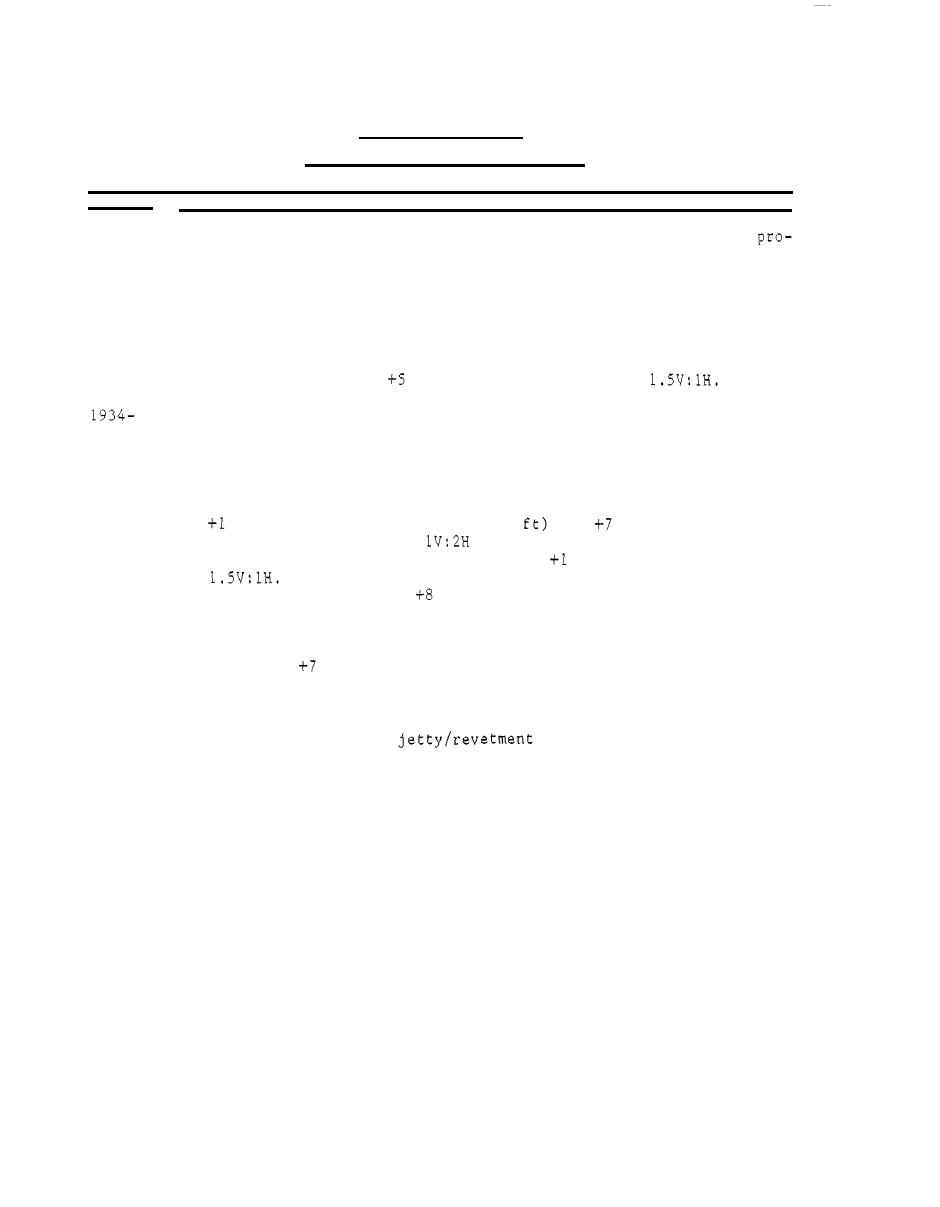
Table 20
Palm Beach Jetties
Palm Beach Harbor, Florida, SAJ
Date(s)
Construction and Rehabilitation History
1920
Local interests constructed two parallel jetties, 600 ft apart,
viding for a 16-ft-deep channel entrance. The jetties were con-
structed of coquina rock and limestone.
Local interests constructed two new granite stone jetties (Fig-
1925-
1926
alignment). The lengths were 1,700 and 2,150 ft for the north and
south jetties, respectively. The design cross section consisted of
ft r l and side slopes of
nw
a 10-ft crest width at
Lake Worth inlet became a Federal project in March 1934. A report
1938
of May 1935 stated that the jetties were in poor condition and that
revetments were needed. Restoration of the jetties and construction
of connecting revetments were accomplished from October 1936 to June
1938. The major features consisted of (a) the placing of new 8- to
10-ton granite stone and resetting of existing stone to elevations
ft rnlw (trunk crest width of 30
and
ft mlw (head crest
of
width of 10 to 20 ft) with
side slopes, and (b) the placing of
ft rnlw with side slopes
a solid concrete cap on the trunks above
The shoreward 850 ft of the 950-ft-long north jetty was
of
ft mlw with a top width of 6 ft, and
capped to an elevation of
the seaward 100 ft had void spaces filled with asphaltic concrete
above -3 ft mlw. The shoreward 1,790 ft of the 1,890-ft-long south
jetty was capped similarly, except that the seaward half had a crest
ft rnlw and crest width of 9 ft. For comparison pur-
elevation of
poses, asphaltic concrete was not placed on the 100-ft head section.
The jetties were placed on existing grade without a core of smaller
stone. The total cost of the project was 3,000. Shortly after
areas, heavy seas caused
completion of the north
loss of stone and deterioration of the revetment section immediately
adjacent to shoreward end of the concrete cap. During this period
the project depth was increased to 20 ft.
A 40-ft section of the concrete cap on the south jetty approximately
1945
420 ft from the shoreward end had settled about 4 in., had longi-
tudinal cracks, and was acting as a beam. These occurrences were
brought on by tidal scour through, and settlement of, the underlying
armor stone. The cause of the problem was thought to result from
the lack of additional armor stone placed in this and adjacent sec-
tions of the old jetty during the 1934-38 rehabilitation. The north
jetty was in good condition, and its only problem was its ineffec-
tiveness as a barrier to tidally-induced sand motion under the
structure. This problem was evidenced in the original jetties and
(Continued)
(Sheet 1 of 3)
59



 Previous Page
Previous Page
